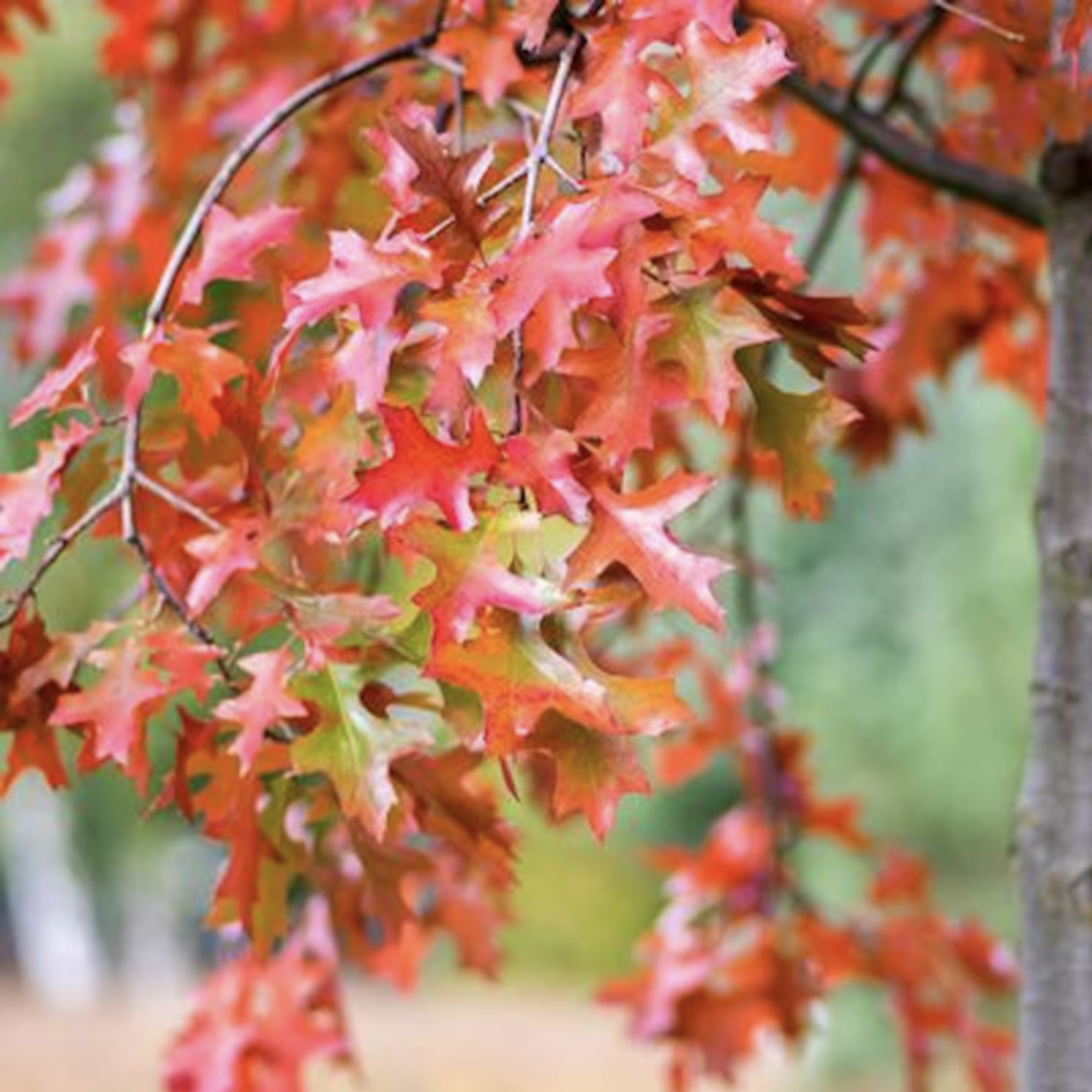7 Fall Privacy Plants To Screen Your Space With Glorious Autumn Colors
Provide shelter and privacy to borders and outdoor seating areas with beautiful plants ablaze with color and interest in the fall.

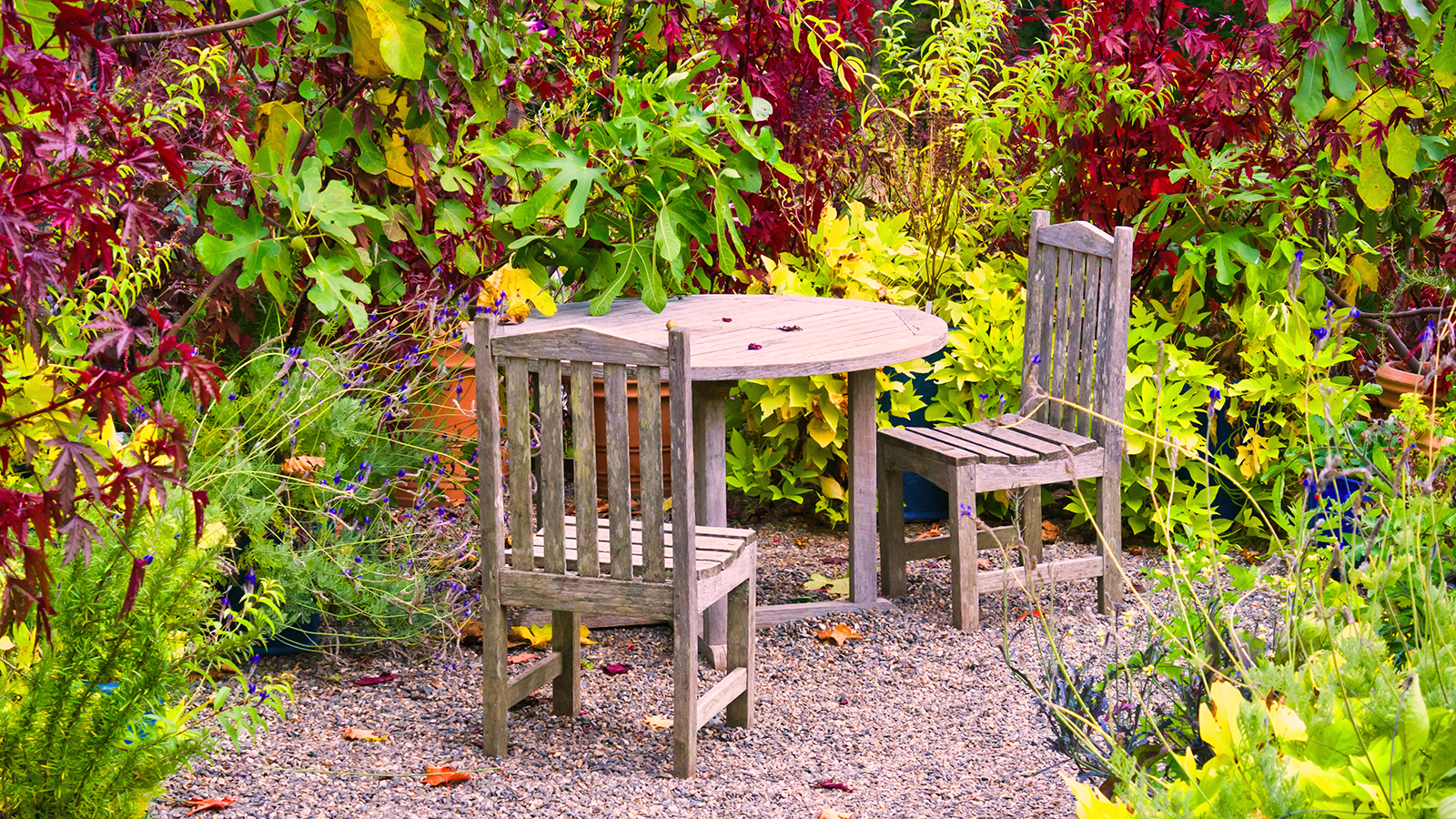
As autumn sets in and tree leaves blaze with glorious color and begin to fall, our gardens become more and more exposed. There are many options to help screen your area and give it more privacy, but in the outdoors, plants are a wonderful choice.
There are many plants for fall gardens that provide seasonal color in the form of foliage hues, flowers, fruits, or outstanding contours. When used as privacy plants, they can create an outdoor oasis filled with sensory delights.
Planting perennials in fall is an ideal time due to the season's cooler temperatures and wetter conditions. The soil is still workable and plants will have time to establish their roots before winter’s cold embrace.
Here are our top plants to provide a leafy retreat in your yard.
1. Virginia Creeper
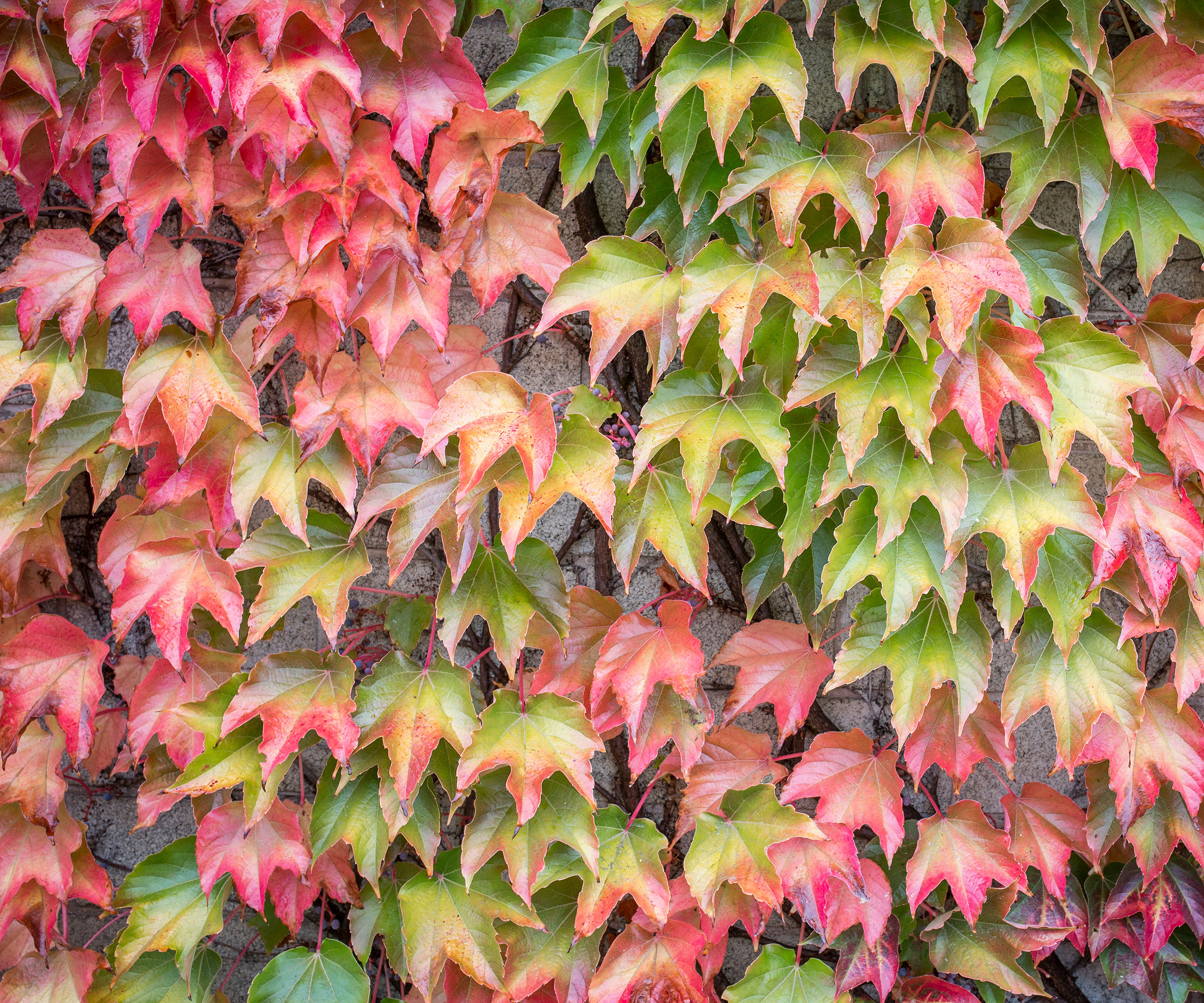
If you have a wall, fence or trellis, a vine makes a lovely privacy screen. Virginia creeper is a climbing vine with leaves that sport odd-numbered leaflets. The plant climbs using tendrils and is quite hardy.
Though Virginia creeper loses its leaves when frost arrives, it puts on an awesome show of color during the fall. The leaves turn purple-red, beginning at the edges, and progressing through the entire leaf.
This easy-care North American native is suitable for USDA hardiness zones 3 to 10 and grows rapidly, culminating at 30 feet (9m) if left unchecked. Unlike many vining plants, Virginia creeper won’t damage buildings as it sticks to surfaces with adhesive roots rather than burying roots into structures.
Sign up for the Gardening Know How newsletter today and receive a free copy of our e-book "How to Grow Delicious Tomatoes".
Blue black berries are present in early fall and are an important food source for songbirds.
2. Viburnum
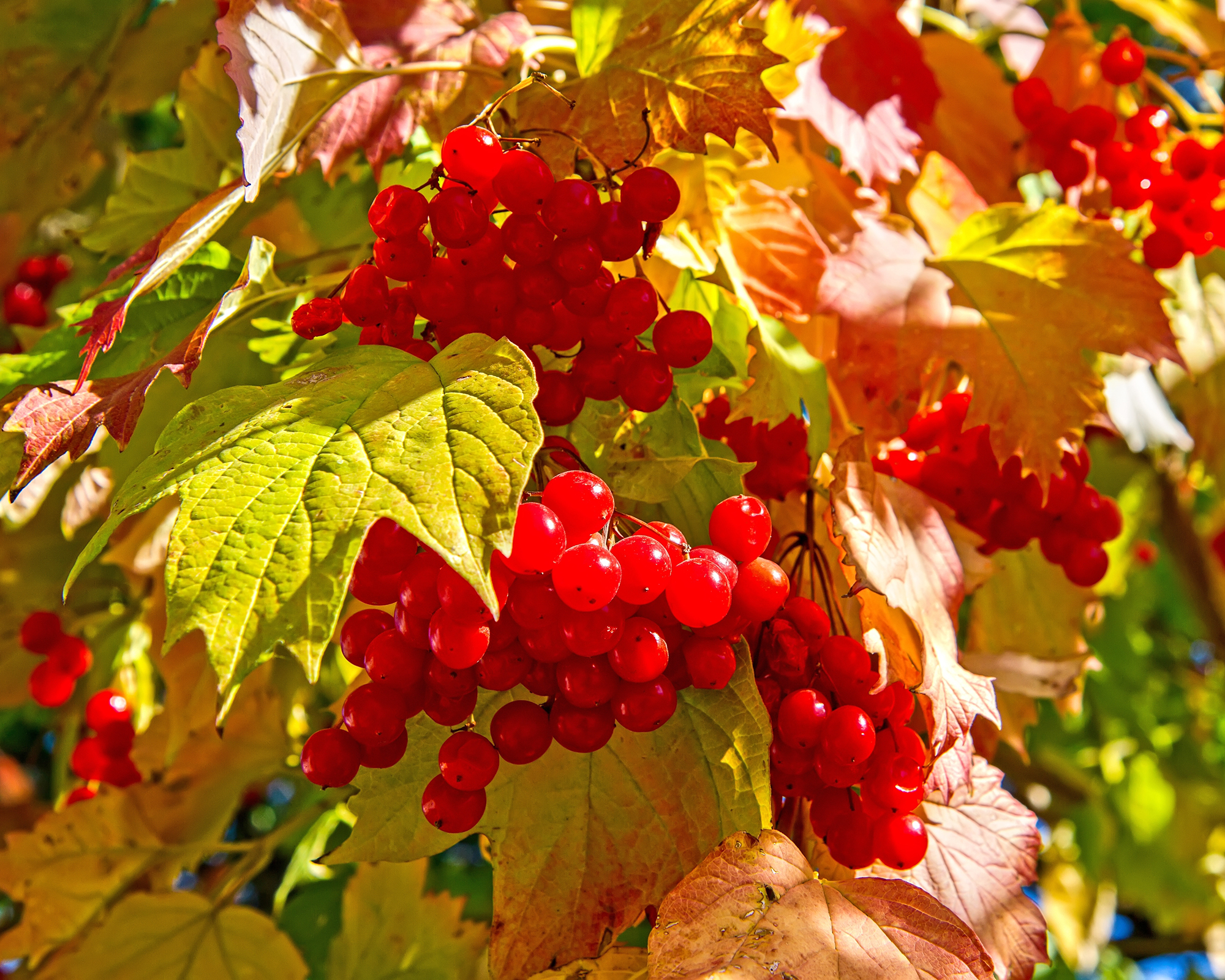
Viburnums are a collection of various plants in different sizes with varied flower and fruit colors. There are options for USDA zones 2-10.
In spring viburnums produce a plethora of white flowers, which are a magnet for pollinating insects. Blooms give way to berries in the fall, which may be bluish black or red, and provide food for a variety of wild birds and animals. The gently scalloped foliage glows with pinks, reds, oranges, and other sunset hues.
Viburnum needs full sun and well-draining soil. Once established plants rarely need maintenance, although you can prune them to shape.
3. Beautyberry
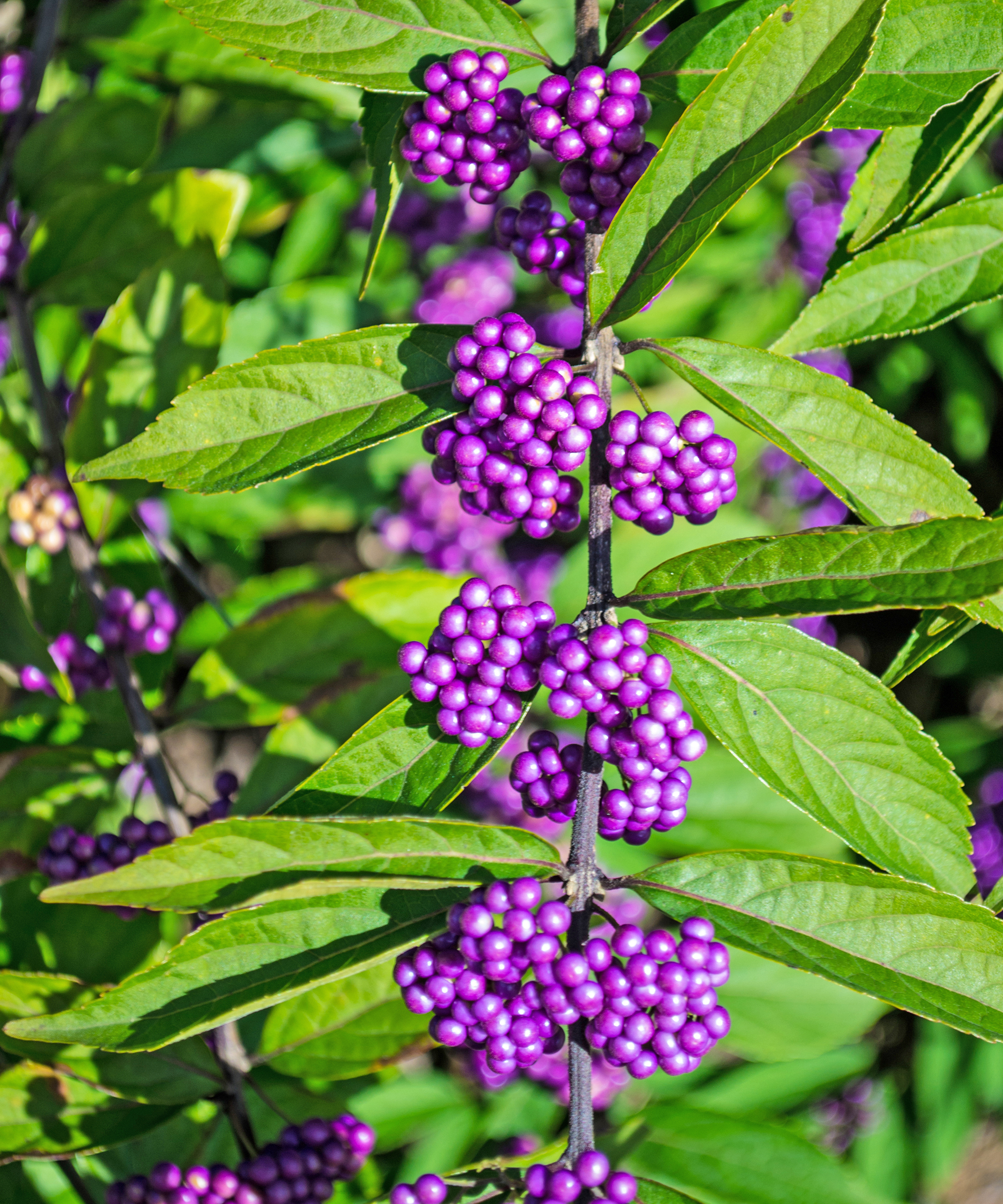
Beautyberry (Callicarpa americana) is a native shrub that can get 6 to 8 feet (1.8 to 2.4m) tall. It isn’t suitable for northern gardeners since it is only hardy in zones 6 to 11, but it packs a lot of punch in the autumn.
The plant has green, oval, pointed leaves which turn yellow with a pinkish tinge, but the standout feature is the fruit. Deeply purple berries in tight clusters line the stems in fall. These fruits provide much-needed food for over 40 bird species.
Beautyberry prefers moist, well-draining soil but has some drought tolerance once established. Plant it in full to partial sun. In late winter, cut the stems back to within 1 foot (30cm) of the ground. This will promote more compact growth and more berries.
4. Oakleaf Hydrangea
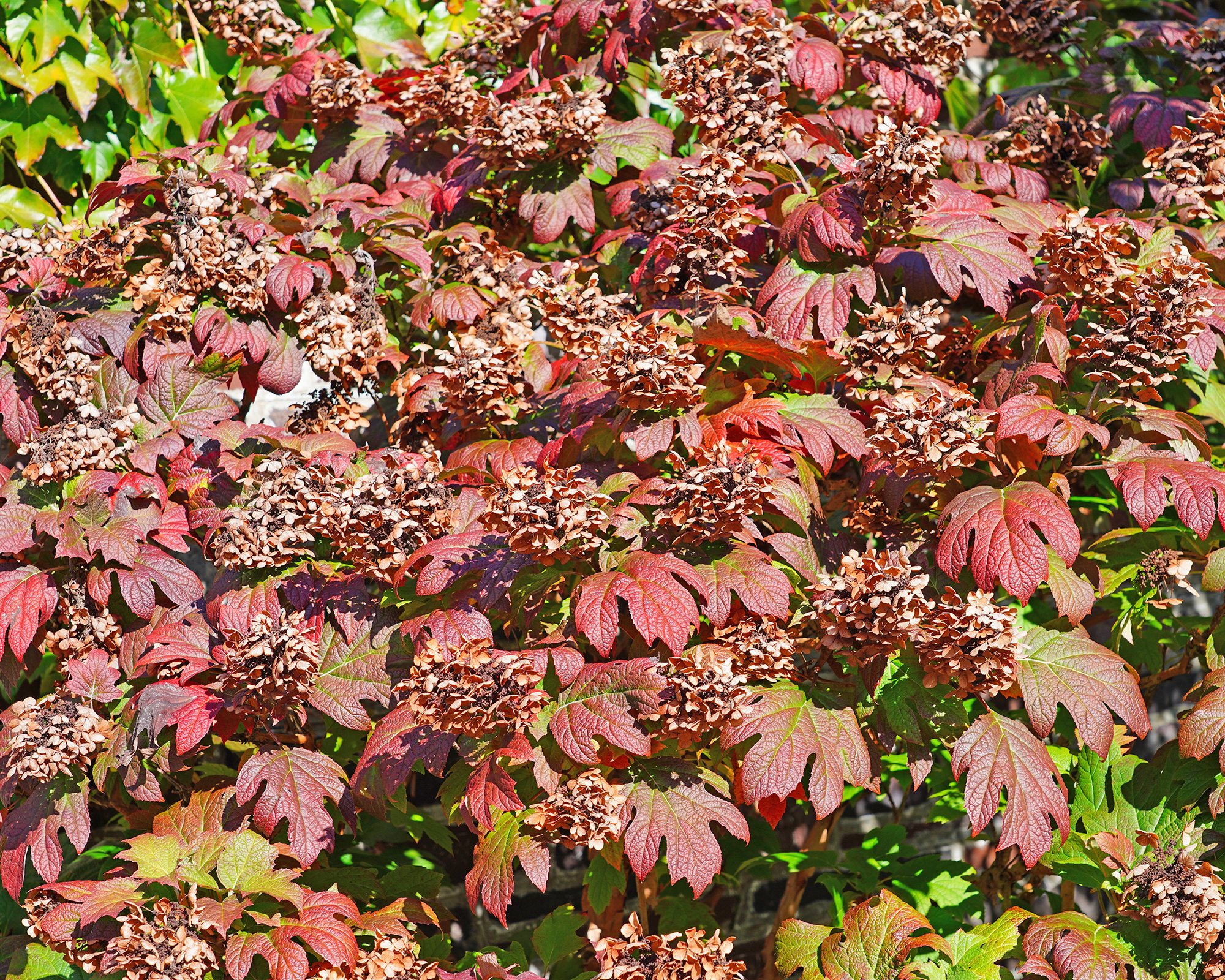
Native to the south-eastern US, oakleaf hydrangea has several seasons of appeal. Spring sees pyramid-shaped clusters of white flowers, but in fall the oak-shaped leaves burnish with burgundy, maroon, and other tones. The older bark is interestingly reddish brown and roughly textured.
Oakleaf hydrangea is suitable for USDA zones 5 to 9. It grows up to 8 feet (2.4m) tall with a similar spread. Plants thrive in rich, moist, well-drained soil in full to partial sun.
The shrub doesn’t produce a neat hedge but instead, a freely arching and natural screen. It may be pruned to keep the plant in a certain size. Just remember it blooms off of old wood so prune after flowering.
5. Fragrant Sumac
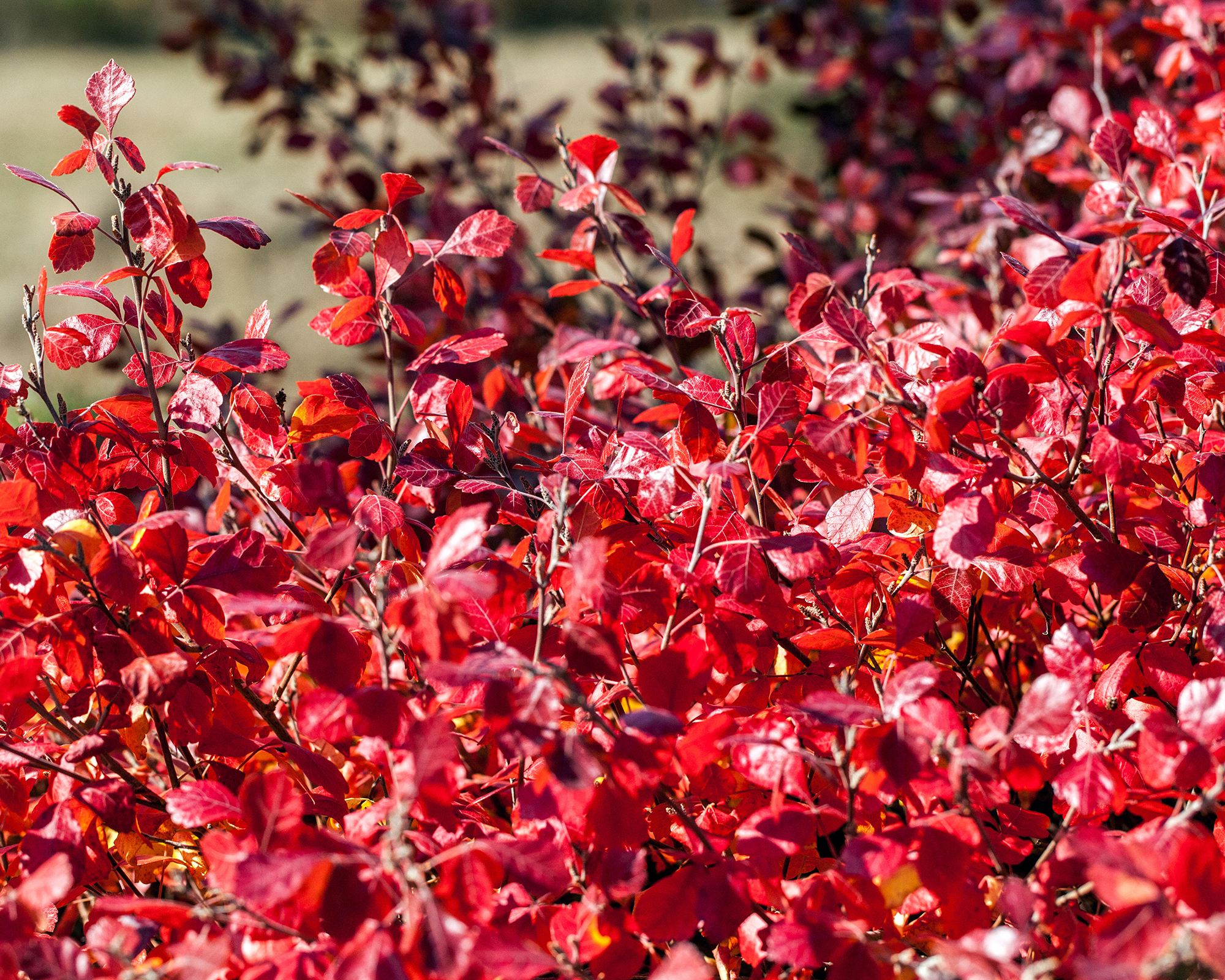
Fragrant sumac (Rhus aromatica) has gently toothed leaves and stems that form an informal hedge when planted en masse. The leaves release a lemon scent when crushed.
Plants have both male and female flowers, with female blooms producing red, edible berries. These often persist into fall where birds enjoy them. In the fall, the leaves will go through a color change featuring purple, red, and orange tones.
Fragrant sumac grows 6 to 12 feet (1.8 to 3.6m) tall and thrives in USDA zones 3 to 9. It doesn’t need pruning but you may shape it if you wish.
The tiny spring flowers attract pollinators in spring, while the fall berries are eaten by many bird species.
6. Glossy Abelia
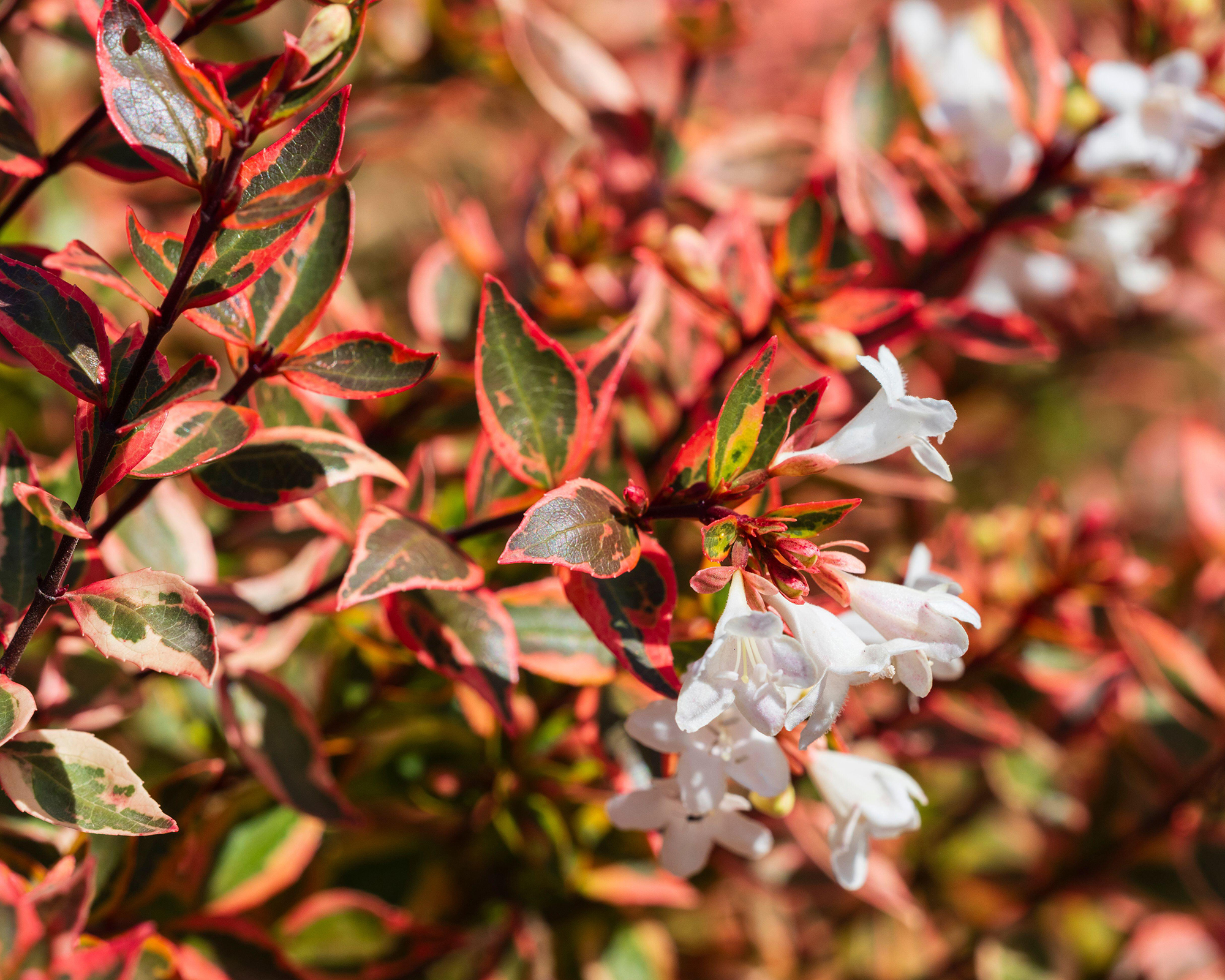
Glossy abelia (Abelia × grandiflora) blooms from late spring into early fall with clusters of pink or white flowers boasting prominent pink to purple sepals. The leaves are small, shiny, oval and green during most of the year, but in autumn turn purple red as the season cools. The overall shrub is loose, with arching stems, and rounded.
Glossy abelia is hardy, drought tolerant, and deer resistant, suitable for USDA zones 6 to 9. Plant in full sun or part shade where soil is moist and well draining.
This is a low-maintenance plant once established but it can be pruned if necessary. The plant blooms on new wood, so prune in late winter to early spring.
7. Ninebark
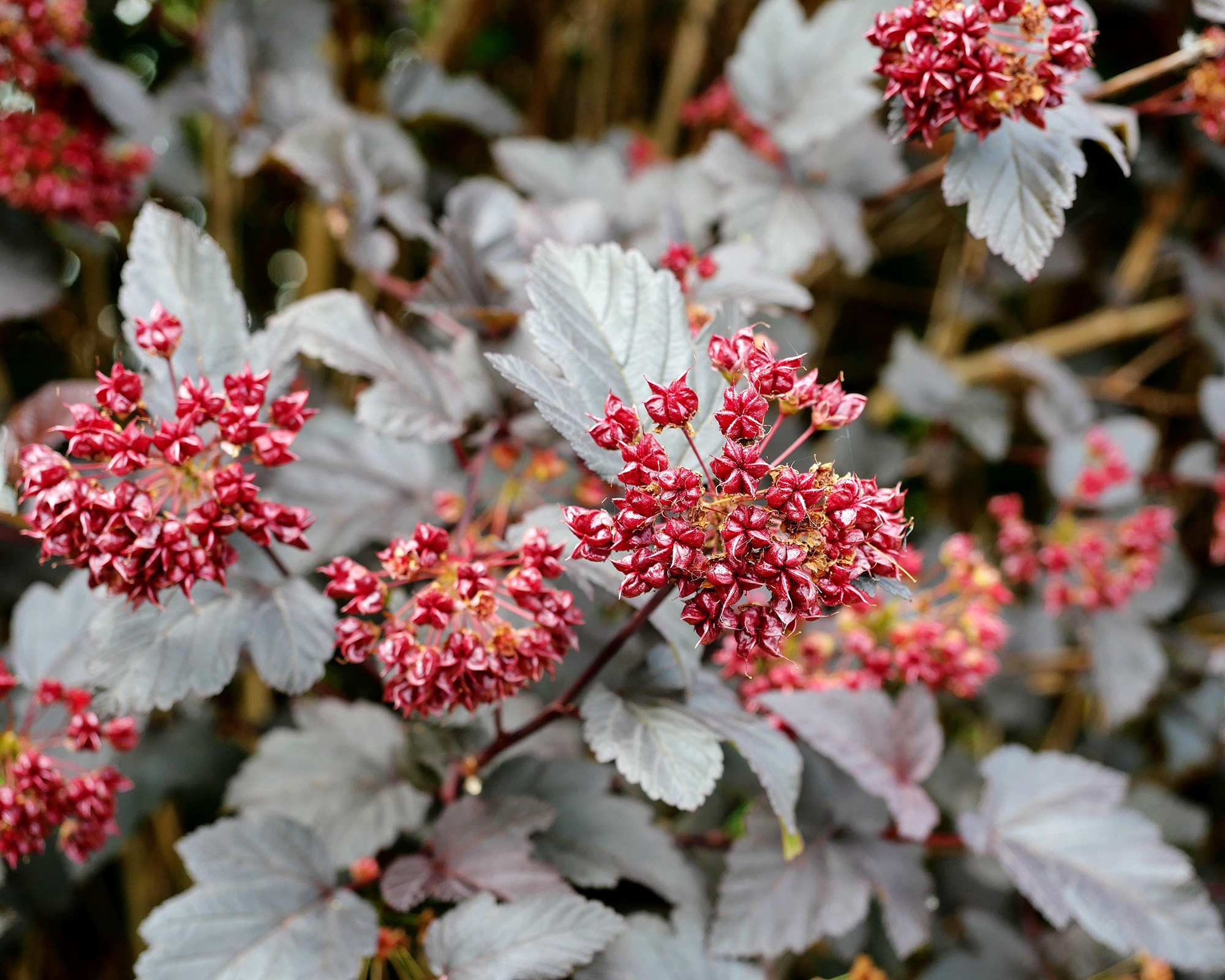
Ninebark is a North American native plant with several seasons of interest. It is quite cold hardy and useful in northern gardens, and is compatible with USDA zones 2 to 7.
Its foliage is yellowish green most of the year but turns a rich chocolatey bronze in fall. The leaves have slightly serrated edges and are so veiny they have a crinkly effect. The bark sloughs off as it gets older giving the stems a shaggy appearance. In spring, small clusters of white flowers appear.
Ninebark is adapted to most soils, moist or dry sites, full or partial sun. It may get 10 feet (3m) tall. There are many varieties of ninebark with foliage colors in orange, maroon, and gold.
This article features products available from third-party vendors on the Gardening Know How Shop.

Bonnie Grant is a professional landscaper with a Certification in Urban Gardening. She has been gardening and writing for 15 years. A former professional chef, she has a passion for edible landscaping.
